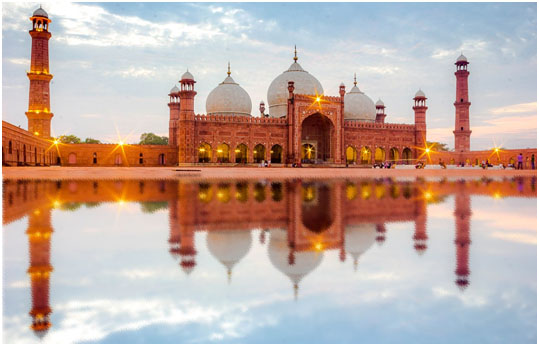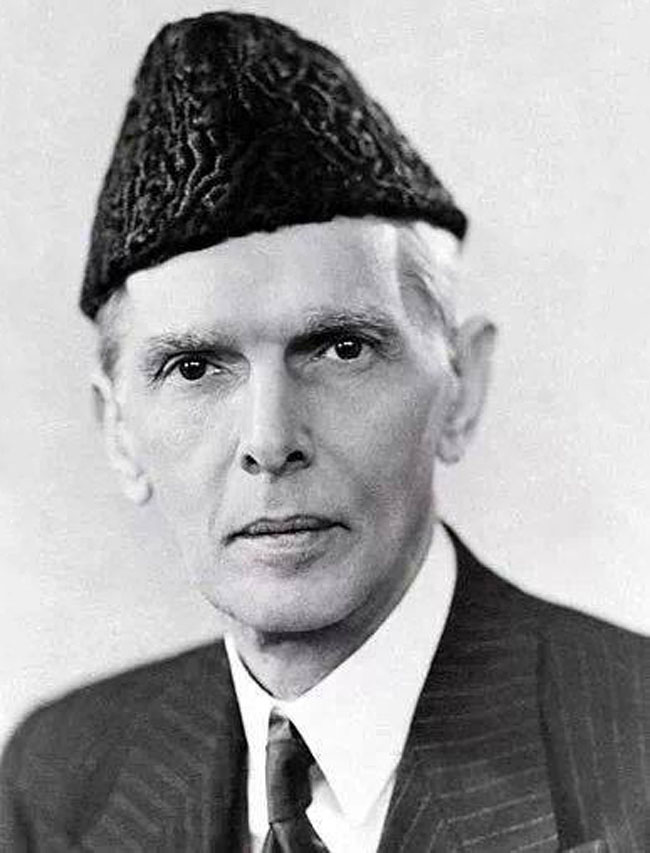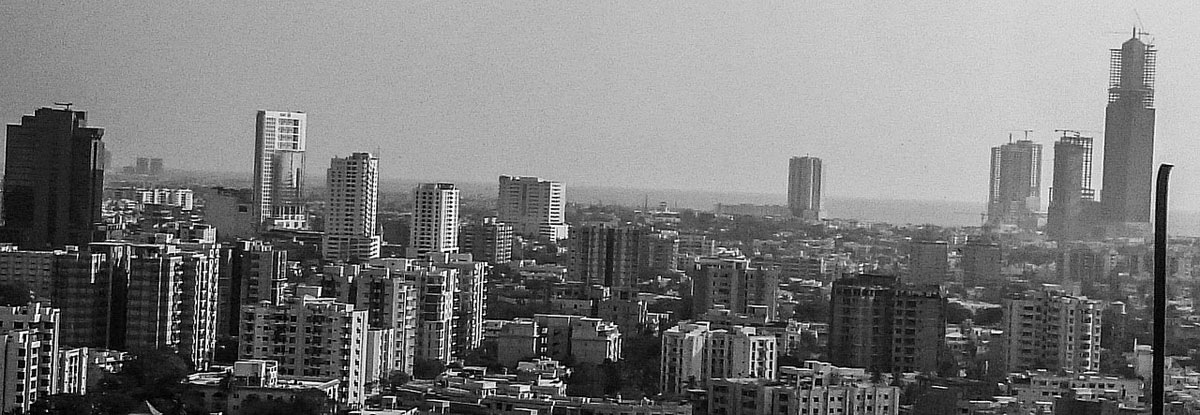Indus Valley Civilization
Minister Lord from Mohenjo-daro (c. 2500 BCE)
The absolute earliest antiquated human civilizations in South Asia started from regions enveloping present-day Pakistan. The earliest known occupants in the locale were Soanian during the Lower Paleolithic, of whom relics have been found in the Soan Valley of Punjab. The Indus area, which covers the majority of the present-day Pakistan, was the site of a few progressive old societies including the Neolithic (7000-4300 BCE) site of Mehrgarh, and the 5,000-year history of metropolitan life in South Asia to the different destinations of the Indus Valley Civilization, including Mohenjo-daro and Harappa.
Vedic Period
Incineration urn, Gandhara grave culture, Smack Valley, c. 1200 BCE
Following the downfall of the Indus valley civilization, Indo-Aryan clans moved into the Punjab from Focal Asia in a few rushes of relocation in the Vedic time frame (1500-500 BCE), carrying with them their unmistakable strict customs and practices which melded with neighborhood culture. The Indo-Aryans strict convictions and practices from the Bactria-Margiana culture and the local Harappan Indus convictions of the previous Indus Valley Human progress in the end led to Vedic culture and tribes. Generally outstanding among them was Gandhara development, which prospered at the junction of India, Focal Asia, and the Center East, interfacing shipping lanes and retaining social impacts from different civilizations. The underlying early Vedic culture was an ancestral, peaceful society focused in the Indus Valley, of what is today Pakistan. During this period the Vedas, the most established sacred texts of Hinduism, were composed.
Old Style Period
Standing Buddha from Gandhara (first second century CE)
The western areas of Pakistan turned out to be important for Achaemenid Domain around 517 BCE. In 326 BCE, Alexander the Incomparable vanquished the district by overcoming different neighborhood rulers, most remarkably, the Lord Porus, at Jhelum. It was trailed by the Maurya Realm, established by Chandragupta Maurya and stretched out by Ashoka the Incomparable, until 185 BCE. The Indo-Greek Realm established by Demetrius of Bactria (180-165 BCE) included Gandhara and Punjab and arrived at its most noteworthy degree under Menander (165-150 BCE), thriving the Greco-Buddhist culture in the region. Taxila had perhaps of the earliest college and focuses of advanced education on the planet, which was laid out during the late Vedic period in the sixth century BCE. The old college was archived by the attacking powers of Alexander the Incomparable and was additionally kept by Chinese travelers in the fourth or fifth century CE.
Islamic Triumph
The Middle Easterner vanquisher Muhammad ibn Qasim vanquished Sindh and a few locales of Punjab in 711 CE. The Pakistan government’s true order guarantees this as when the underpinning of Pakistan was laid. The Early Archaic period (642-1219 CE) saw the spread of Islam in the region. Before the appearance of Islam starting in the eighth hundred years, the district of Pakistan was home to a different plenty of religions, including Hinduism, Buddhism, Jainism and Zoroastrianism. During this period, Sufi evangelists assumed a urgent part in switching a greater part of the territorial populace over completely to Islam. Upon the loss of the Turk and Hindu Shahi traditions which represented the Kabul Valley, Gandhara (present-day Khyber Pakhtunkwa), and western Punjab in the seventh to eleventh hundreds of years CE, a few progressive Muslim realms managed over the district, including the Ghaznavid Domain (975-1187 CE), the Ghorid Realm, and the Delhi Sultanate (1206-1526 CE). The Lodi line, the remainder of the Delhi Sultanate, was supplanted by the Mughal Realm (1526-1857 CE)
The Mughals presented Persian writing and high culture, laying out the foundations of Indo-Persian culture in the region. In the locale of advanced Pakistan, key urban communities during the Mughal time frame were Multan, Lahore, Peshawar and Thatta, which were picked as the site of amazing Mughal buildings. In the mid sixteenth hundred years, the area stayed under the Mughal Empire. In the eighteenth hundred years, the sluggish crumbling of the Mughal Realm was rushed by the rise of the opponent powers of the Maratha Alliance and later the Sikh Domain, as well as attacks by Nader Shah from Iran in 1739 and the Durrani Realm of Afghanistan in 1759. The developing political force of the English in Bengal had not yet arrived at the domains of current Pakistan.

Provincial Rule
None of current Pakistan was under English rule until 1839 when Karachi, a little fishing town represented by Talpurs of Sindh with a mud stronghold watching the harbor, was taken, and utilized as a territory with a port and army installation for the Primary Afghan Conflict that ensued. The rest of Sindh was procured in 1843, and in this way, through a progression of wars and settlements, the East India Organization, and later, after the post-Sepoy Revolt (1857-1858), direct rule by Sovereign Victoria of the English Realm, obtained the vast majority of the region. Key contentions incorporated those against the Baloch Talpur tradition, settled by the Clash of Miani (1843) in Sindh, the Somewhat English Sikh Conflicts (1845-1849), and the Somewhat English Afghan Conflicts (1839-1919). By 1893, all cutting edge Pakistan was important for the English Indian Domain, and remained so until freedom in 1947.
Under English rule, present day Pakistan was principally isolated into the Sind Division, Punjab Area, and the Baluchistan Office. The locale additionally included different regal states, with the biggest being Bahawalpur.
The major outfitted battle against the English in the district was the resistance known as the Sepoy Revolt in 1857. Uniqueness in the connection among Hinduism and Islam brought about huge strain in English India, prompting strict viciousness. The language contention further exacerbated strains among Hindus and Muslims. A Muslim scholarly development, drove by Sir Syed Ahmed Khan to counter the Hindu renaissance, upheld for the two-country hypothesis and prompted the foundation of the All-India Muslim Association in 1906.
In Walk 1929, because of the Nehru Report, Muhammad Ali Jinnah, the pioneer behind Pakistan, gave his fourteen focuses, which included proposition to defend the interests of the Muslim minority in a unified India. These proposition were dismissed, hence making ready for the parcel of India. In his December 29, 1930 location, Allama Iqbal pushed for the two-country hypothesis by proposing the combination of Muslim-larger part states in North-West India, including Punjab, North-West Wilderness Territory, Sind, and Baluchistan. The discernment that Congress-drove English common legislatures disregarded the Muslim Association from 1937 to 1939 persuaded Jinnah and other Muslim Association pioneers to embrace the two-country theory. This prompted the reception of the Lahore Goal of 1940, introduced by Sher-e-Bangla A.K. Fazlul Haque, otherwise called the Pakistan Resolution.
By 1942, England confronted extensive strain during The Second Great War, with India straightforwardly undermined by Japanese powers. England had promised deliberate autonomy for India in return for help during the conflict. In any case, this promise incorporated a proviso expressing that no piece of English India would be constrained to join the subsequent territory, which could be deciphered as help for a free Muslim country. Congress under the initiative of Mahatma Gandhi sent off the Quit India Development, requesting a quick finish to English rule. Conversely, the Muslim Association decided to help the UK’s conflict endeavors, consequently sustaining the chance of laying out a Muslim country.
Freedom
The 1946 decisions saw the Muslim Association secure 90% of the Muslim seats, upheld by the landowners of Sindh and Punjab. This constrained the Indian Public Congress, at first wary of the Association’s portrayal of Indian Muslims, to recognize its significance. Jinnah’s development as the voice of the Indian Muslims, constrained the English to think about their position, notwithstanding their hesitance to parcel India. In a last endeavor to forestall parcel, they proposed the Bureau Mission Plan.

As the Bureau Mission fizzled, the English reported their goal to end rule by June 1948. Observing thorough conversations including Emissary of India, Master Mountbatten of Burma, Muhammad Ali Jinnah of the All-India Muslim Association, and Jawaharlal Nehru of Congress, the conventional statement to segment English India into two autonomous domains — in particular Pakistan and India — was given by Mountbatten on the night of 3 June 1947. In Mountbatten’s oval office, the state heads of around twelve significant royal states assembled to accept their duplicates of the arrangement before its overall transmission. At 7:00 P.M., All India Radio sent the public declaration, beginning with the emissary’s location, trailed by individual discourses from Nehru, and Jinnah. The pioneer behind Pakistan Muhammad Ali Jinnah finished up his location with the trademark Pakistan Zindabad (May Pakistan). live forever.
As the Unified Realm consented to the dividing of India, the advanced territory of Pakistan was laid out on 14 August 1947 (27th of Ramadan in 1366 of the Islamic Schedule, viewed as the most honored date from an Islamic perspective). This new country amalgamated the Muslim-greater part eastern and northwestern locales of English India, containing the areas of Balochistan, East Bengal, the North-West Wilderness Region, West Punjab, and Sindh.
In the mobs that went with the parcel in Punjab Territory, somewhere in the range of 200,000 and 2,000,000 individuals were killed in what some have portrayed as a retributive destruction between the religions. Around 50,000 Muslim ladies were snatched and assaulted by Hindu and Sikh men, while 33,000 Hindu and Sikh ladies encountered similar destiny because of Muslims. Around 6.5 million Muslims moved from India to West Pakistan and 4.7 million Hindus and Sikhs moved from West Pakistan to India. It was the biggest mass relocation in human history. An ensuing disagreement regarding the royal province of Jammu and Kashmir in the long run ignited the Indo-Pakistani Conflict of 1947-1948.
Post Freedom
After freedom in 1947, Jinnah, the Leader of the Muslim Association, turned into Pakistan’s most memorable Lead representative General and the principal President-Speaker of the Parliament, yet he capitulated to tuberculosis on 11 September 1948. In the mean time, Pakistan’s principal architects consented to choose Liaquat Ali Khan, the secretary-general of the party, the country’s most memorable Prime Minister. From 1947 to 1956, Pakistan was a government inside the Province of Countries, and had two rulers before it turned into a republic.
The formation of Pakistan was never completely acknowledged by numerous English chiefs including Master Mountbatten. Mountbatten communicated his absence of help and confidence in the Muslim Association’s concept of Pakistan. Jinnah denied Mountbatten’s proposal to act as Lead representative General of Pakistan. When Mountbatten was asked by Collins and Lapierre in the event that he would have undermined Pakistan had he realized that Jinnah was passing on from tuberculosis, he answered ‘most likely’.
Maulana Shabbir Ahmad Usmani, a regarded Deobandialim (researcher) who stood firm on the foothold of Shaykh al-Islam in Pakistan in 1949, and Maulana Mawdudi of Jamaat-I-Islami assumed key parts in upholding for an Islamic constitution. Mawdudi demanded that the Constituent Get together pronounce the “preeminent power of God” and the matchless quality of the shariah in Pakistan.
The endeavors of Jamaat-I-Islami and the ulama prompted the section of the Goals Goal in Walk 1949. This goal, depicted by Liaquat Ali Khan as the second most huge move toward Pakistan’s set of experiences, insisted that “sway over the whole universe has a place with God All-powerful alone and the power which He has designated to the Territory of Pakistan through its kin for being practiced inside the cutoff points endorsed by Him is a hallowed trust”. It was subsequently included as a preface to the constitutions of 1956, 1962, and 1973.
A majority rules government confronted misfortunes because of the military regulation forced by President Iskander Mirza, who was prevailed by Broad Ayub Khan. In the wake of embracing an official framework in 1962, Pakistan saw critical development until the second conflict with India in 1965, bringing about a monetary slump and boundless public discontent in 1967. In 1969, President Yahya Khan combined control, yet confronted an overwhelming typhoon in East Pakistan bringing about 500,000 passings.
In 1970, Pakistan led its most memorable popularity based races since autonomy, planning to progress from military rule to a majority rules system. In any case, after the East Pakistani Awami Association arose triumphant over the Pakistan People groups Party (PPP), Yahya Khan and the military wouldn’t move power. This prompted Activity Searchlight, a tactical crackdown, and ultimately started the conflict of freedom by Bengali MuktiBahini powers in East Pakistan, portrayed in West Pakistan as a nationwide conflict as opposed to a freedom battle.
Free scientists gauge that somewhere in the range of 300,000 and 500,000 regular citizens kicked the bucket during this period while the Bangladesh government puts the quantity of dead at three million, a figure that is currently almost generally viewed as unnecessarily inflated. A few scholastics, for example, Rudolph Rummel and Rounaq Jahan say the two sides committed genocide; others like Richard Sisson and Leo E. Rose accept there was no genocide. in light of India’s help for the rebellion in East Pakistan, pre planned strikes on India by Pakistan’s flying corps, naval force, and marines started a customary conflict in 1971 that brought about an Indian triumph and East Pakistan acquiring freedom as Bangladesh.
With Pakistan giving up in the war, Yahya Khan was supplanted by Zulfikar Ali Bhutto as president; the nation pursued proclaiming its constitution and putting the country headed for democracy. In 1972 Pakistan left on an aggressive arrangement to foster its atomic discouragement capacity fully intent on forestalling any unfamiliar attack; the country’s most memorable thermal energy station was initiated in that equivalent year. India’s most memorable atomic test in 1974 gave Pakistan extra defense to speed up its atomic program.
A majority rules system finished with a tactical overthrow in 1977 against the radical PPP, which saw General Zia-ul-Haq become the president in 1978. From 1977 to 1988, President Zia’s corporatisation and monetary Islamisation drives prompted Pakistan becoming perhaps of the quickest developing economy in South Asia. While developing the country’s atomic program, expanding Islamisation, and the ascent of a local moderate way of thinking, Pakistan sponsored and disperse US assets to groups of the mujahideen against the USSR’s mediation in socialist Afghanistan. Pakistan’s North-West Outskirts Region turned into a base for the counter Soviet Afghan warriors, with the territory’s powerful Deobandiulama assuming a critical part in empowering and coordinating the ‘jihad’.
President Zia passed on in a plane accident in 1988, and Benazir Bhutto, girl of Zulfikar Ali Bhutto, was chosen as the country’s most memorable female Top state leader. The PPP was trailed by moderate Pakistan Muslim Association (N) (PML (N)), and throughout the following ten years the heads of the two gatherings battled for power, exchanging in office. This period is set apart by delayed stagflation, political precariousness, debasement, misgovernment, international competition with India, and the conflict of left wing-conservative ideologies. As PML (N) got a super majority in races in 1997, Nawaz Sharif approved atomic testings, as a reprisal to the second atomic tests led by India in May 1998.
Military strain between the two nations in the Kargil locale prompted the Kargil Battle of 1999,[152][153] and disturbance in common military relations permitted General Pervez Musharraf to take over through a bloodless overthrow d’état. Musharraf represented Pakistan as CEO from 1999 to 2002 and as President from 2001 to 2008 — a time of enlightenment, social liberalism, broad monetary reforms, and direct contribution in the US-drove battle on terrorism. By its own monetary estimations, Pakistan’s association in the conflict on psychological oppression has cost up to $118 billion, north of 81 thousand casualties, and more than 1.8 million dislodged civilians.
The Public Get together generally finished its most memorable full five-year term on 15 November 2007. After the death of Benazir Bhutto in 2007, the PPP got the most votes in the appointment of 2008, delegating party part Yusuf Raza Gilani as Prime Minister. Undermined with prosecution, President Musharraf surrendered on 18 August 2008, and was prevailed by Asif Ali Zardari. Conflicts with the judicature provoked Gilani’s exclusion from the Parliament and as the State leader in June 2012. The overall political decision held in 2013 saw the PML (N) accomplish victory, following which Nawaz Sharif was chosen as State head for the third time. In 2018, PTI won the overall political race and Imran Khan turned into the 22nd Prime Minister. In April 2022, Shehbaz Sharif was chosen as top state leader, after Imran Khan lost a no-certainty vote. During 2024 general political decision, PTI-upheld free movers turned into the biggest bloc, however Shehbaz Sharif was chosen top state leader briefly term, because of an alliance between PML (N) and PPPP.
Economy
Pakistan’s economy positions 24th internationally by buying power equality (PPP) and 43rd by ostensible Gross domestic product. By and large, Pakistan was important for the richest locale in the principal thousand years CE, yet lost ground to districts like China and Western Europe by the eighteenth century. Pakistan is a creating country, and part of the Following Eleven, ready to become one of the world’s biggest economies in the 21st hundred years, close by the BRICS.
Lately, Pakistan has confronted social precariousness and macroeconomic lopsided characteristics, with lacks in administrations like rail transportation and electrical energy generation. The semi-industrialized economy has development focuses along the Indus River. The broadened economies of Karachi and Punjab’s metropolitan places coincide with less-created regions in different pieces of the country, especially in Balochistan. Pakistan positions as the 67th-biggest product economy and the 106th-most complex economy worldwide, with a negative exchange total of US$23.96 billion monetary year 2015-16.
Starting around 2022, Pakistan’s assessed ostensible Gross domestic product is US$376.493 billion. The Gross domestic product by PPP is US$1.512 trillion. The assessed ostensible per capita Gross domestic product is US$1,658, the Gross domestic product (PPP)/capita is US$6,662 (global dollars), As indicated by the World Bank, Pakistan has significant vital enrichments and advancement potential. The rising extent of Pakistan’s childhood gives the country both a likely segment profit and a test to offer satisfactory types of assistance and employment. 21.04% of the populace live underneath the global neediness line of US$1.25 every day. The joblessness rate among the matured 15 and over populace is 5.5%. Pakistan has an expected 40 million working class residents, projected to increment to 100 million by 2050. A 2015 report distributed by the World Bank positioned Pakistan’s economy at 24th-largest on the planet by buying power and 41st-largest in outright terms. It is South Asia’s second-biggest economy, addressing around 15.0% of local GDP.
Pakistan’s financial development differed after some time, with slow advancement during popularity based changes yet vigorous extension under military regulation, lacking supportable foundations. Quick changes in the ahead of schedule to mid-2000s, including expanded improvement spending, decreased destitution by 10% and helped Gross domestic product by 3%. The economy cooled post-2007, with expansion cresting at 25.0% in 2008, requiring IMF mediation to forestall bankruptcy. The Asian Improvement Bank later noted facilitating monetary strain in Pakistan. Expansion for monetary year 2010-11 remained at 14.1%. Beginning around 2013, Pakistan’s economy has seen development under an IMF program. Goldman Sachs anticipated Pakistan’s economy could grow multiple times by 2050, and Ruchir Sharma in his 2016 book expected a change to a center pay country by 2020.
Pakistan’s huge normal ware creation and tenth biggest work market, alongside a US$19.9 billion commitment from its 7-million-in number diaspora in 2015-16, position it essentially. Nonetheless, Pakistan’s worldwide commodity share is declining, representing only 0.13% in 2007 as per the World Exchange Association.
Farming and Mining Area
The Pakistani economy has moved from farming to administrations, with horticulture contributing just 20.9% of the Gross domestic product as of 2015. Regardless of this, Pakistan’s wheat creation in 2005 outperformed Africa’s and almost paired South America’s, featuring its rural significance. The area utilizes 43.5% of the workforce and is a significant wellspring of unfamiliar exchange.
Fabricated trades, intensely dependent on agrarian unrefined substances like cotton and stows away, face inflationary tensions because of supply deficiencies and market disturbances. Pakistan positions fifth in cotton creation, independent in sugarcane, and the fourth-biggest milk maker all around the world. However land and water assets haven’t expanded proportionately, efficiency gains, particularly from the Green Transformation in the last part of the 1960s and 1970s, essentially supported wheat and rice yields. Confidential cylinder wells and High Yielding Assortments (HYVs) further expanded crop yields. Meat industry represents 1.4 percent of in general Gross domestic product.
Agribusiness and Mining Area
The Pakistani economy has moved from farming to administrations, with horticulture contributing just 20.9% of the Gross domestic product as of 2015. Notwithstanding this, Pakistan’s wheat creation in 2005 outperformed Africa’s and almost paired South America’s, featuring its rural significance. The area utilizes 43.5% of the workforce and is a significant wellspring of unfamiliar exchange.
Made trades, intensely dependent on agrarian natural substances like cotton and stows away, face inflationary tensions because of supply deficiencies and market disturbances. Pakistan positions fifth in cotton creation, independent in sugarcane, and the fourth-biggest milk maker all around the world. However land and water assets haven’t expanded proportionately, efficiency gains, particularly from the Green Upheaval in the last part of the 1960s and 1970s, altogether helped wheat and rice yields. Confidential cylinder wells and High Yielding Assortments (HYVs) further increased crop yields. Meat industry represents 1.4 percent of generally speaking Gross domestic product.
The Travel Industry
With its different societies, scenes, and attractions, Pakistan attracted around 6.6 million unfamiliar vacationers 2018. Notwithstanding, this was a downfall from the pinnacle of the travel industry during the 1970s driven by the well known Nonconformist trail. Pakistan flaunts attractions from mangroves in the south to Himalayan slope stations in the upper east, including old Buddhist remains of Takht-I-Bahi and Taxila, the 5,000-year-old Indus Valley civilization destinations, for example, Mohenjo-daro and Harappa, and various mountain tops more than 7,000 meters (23,000 feet). The northern piece of Pakistan flaunts various old forts, displaying old engineering. It envelops the Hunza and Chitral valleys, where the little pre-Islamic Kalasha people group dwells, asserting drop from Alexander the Great. Lahore, Pakistan’s social capital, exhibits various instances of Mughal design, including the Badshahi Masjid, the Shalimar Nurseries, the Burial place of Jahangir, and the Lahore Stronghold. Following the 2005 Kashmir quake, The Watchman featured “The main five vacationer locales in Pakistan” to support the travel industry, highlighting locations like Taxila, Lahore, the Karakoram Roadway, Karimabad, and Lake Saiful Muluk. Celebrations and government drives mean to advance Pakistan’s social heritage. In 2015, the World Monetary Discussion positioned Pakistan 125th out of 141 nations in its Movement and The travel industry Seriousness Report.





